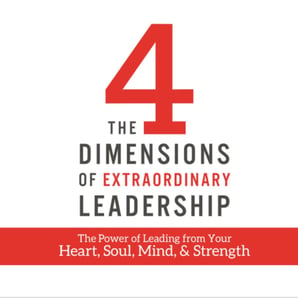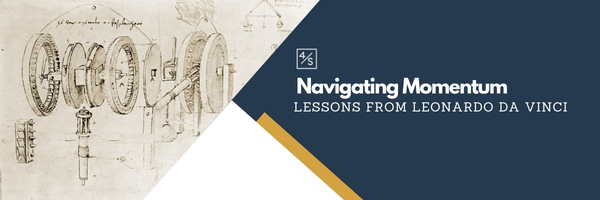Navigating Momentum: Lessons from Leonardo Da Vinci
I once had a mentor tell me that one of the most important things a leader is responsible for is protecting momentum.
It was a new thought for me at the time but it’s a concept I’ve returned to time and time again.
Momentum can be deceiving. When you have it you think you always will. When you don’t you feel like you’ll never get it.
There are two problems with momentum.
- When you don’t have it, it's tempting to blame your strategies or external circumstances. You might believe that a better plan or a shiny new idea will reignite the spark. However, more often than not, the root cause lies deeper.
- When you have momentum it's easy to become complacent. You may overlook underlying issues, coasting along until we hit a roadblock. Only then do we realize the fragility of our momentum.
In Walter Isaacson’s biography of Leonard Da Vinci he explains how, “Leonardo understood the concept of what he called impetus, which is what happens when a force pushes an object and gives it momentum.” In typical Da Vinci form, he couldn’t be content with just the concept, he proved his concept by studying a tightly wound spring noticing that in the beginning it has greater force but as it unwinds it has less and less power. Da Vinci's meticulous observations reveal profound insights into the nature of momentum and how we can sustain it.
What leaders must do:
-
Anticipate the unwinding and have a plan to respond to it.
Every organization, every project or new initiative starts tightly wound. It launches with a boost of momentum. Do you have a plan for the unwinding?
Anticipating the unwinding of momentum is crucial. Just as a tightly wound spring loses its force over time, every organization experiences fluctuations in momentum. Having a plan to mitigate these fluctuations is essential for long-term success.
-
Maintain momentum.
Maintaining momentum requires ongoing effort. It's not enough to rely on past achievements; we must actively nurture the factors that propel us forward.
Another one of Da Vinci’s observations was that “Every movement tends to maintain itself; or rather, every body in motion continues to move so long as the influence of the force that set it in motion is maintained in it.”
Where do we have momentum and how do we maintain it? How do we maintain the influence that originally created the momentum?
-
Know your impetus, defined as “a driving force.”
What is your driving force? How do you create or replenish your own impetus?
In other words, what was the catalytic idea that gave you the passion to launch your organization or new project? Staying connected to that original sense of purpose is key to maintaining momentum. We must ask ourselves: What catalyzed our initial momentum, and how can we stay connected to that driving force?
-
Identify the friction.
“What prevents perpetual motion, Leonardo realized, is the inevitable loss of momentum in a system when it rubs against reality.”
Identifying sources of friction is another critical aspect of momentum management. Just as friction slows down a moving object, external pressures and internal conflicts can hinder our progress. By pinpointing these obstacles, we can address them head-on and keep our momentum intact.
Momentum is both a gift and a challenge. It's a force that propels us toward our goals but demands constant attention and care. With greater awareness of the principles of momentum we are better equipped to anticipate changes in momentum and proactively protect it.

Jenni Catron is a writer, speaker, and leadership coach who consults churches and non-profits to help them lead from their extraordinary best. She speaks at conferences and churches nationwide, seeking to help others develop their leadership gifts and lead confidently. As Founder and CEO of The 4Sight Group, she consults with individuals and teams on leadership and organizational health.
Jenni is the author of several books, including Clout: Discover and Unleash Your God-Given Influence and The 4 Dimensions of Extraordinary Leadership.

Too many leaders feel overwhelmed and ill-equipped to lead. If you can relate to that challenge, you might be asking yourself some questions. What does great leadership look like? How do you become an extraordinary leader?
In this course, Jenni Catron walks you through a framework for leadership that will be an anchor in your growth journey.
Excerpts of this post are taken from Jenni’s book The 4 Dimensions of Extraordinary Leadership (2015, Nelson Books)



Leave Comment